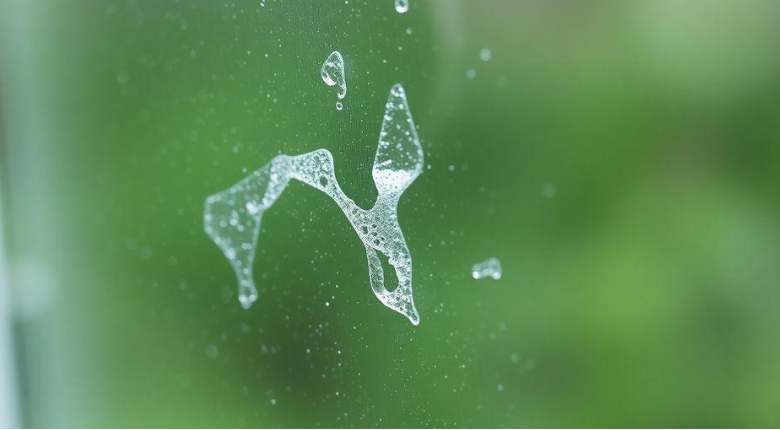When to Schedule Dual Pane Glass Replacement

Your windows do a lot for your home, from keeping the weather out to making things look nice. But sometimes, even the best windows start to show their age. If you’ve noticed condensation creeping in, drafts making your home chilly, or just generally more noise from outside, it might be time to think about dual pane glass replacement. It’s not always obvious when it’s time for new windows, but there are definitely signs to look out for.
Key Takeaways
- Look for condensation between the glass panes, drafts, increased noise, or visible damage as signs your dual pane windows need attention.
- Dual pane windows can fail due to compromised seals, deteriorating frames, or damage to the glass itself, all of which impact insulation.
- Consider full replacement if multiple parts are damaged, repair costs are high, or parts are hard to find; otherwise, repair might be an option for minor issues.
- Professional dual pane glass replacement ensures proper sealing, safe handling of materials, and can help maintain any existing window warranties.
- Factors like glass type, unit size, accessibility, and the need for tempered glass will influence the overall cost of dual pane glass replacement.
Recognizing Signs of Dual Pane Glass Replacement Needs
When your dual pane windows start showing their age, it’s not just about looks. These windows are designed with two panes of glass, separated by a spacer and a layer of air or gas, which acts as insulation. This setup helps keep your home comfortable and your energy bills down. But over time, the seal that keeps everything in place can break. If you’re noticing any of these issues, it’s probably time to think about getting them replaced.
Condensation Between the Panes
This is a big one. If you see fog, moisture, or that cloudy look building up between the two panes of glass, it means the seal has failed. That insulating layer is no longer doing its job, and outside air is getting in, causing condensation. It’s not just unsightly; it means your windows aren’t keeping your home at the temperature you want them to.
Feeling Drafts of Air
Ever walk past a window and feel a chill, even when it’s closed? That’s likely a draft. A compromised seal or worn-out weatherstripping around the frame lets outside air seep into your home. You can try running your hand along the window edges to feel for any air movement. If you feel a draft, it’s a clear sign that your windows are losing their ability to insulate properly.
Increased Noise Levels
Those dual panes aren’t just for temperature control; they also help block out noise from the outside. If you’ve noticed that the sounds of traffic, neighbors, or even just the wind seem louder than they used to be, your windows might be the culprit. A failing seal means less sound dampening, making your home less peaceful.
Visible Damage to Glass or Frames
Sometimes the signs are obvious. Cracks, chips, or significant wear and tear on the glass itself, or on the window frames, can also indicate a need for replacement. Even if only one pane is broken, the entire sealed unit usually needs to be replaced because they’re manufactured as one piece. Damaged frames can also compromise the window’s integrity and insulation. If your window frames are looking faded, cracked, or peeling, it might be time to consider replacing your windows.
It’s easy to ignore these little signs, but they can really add up. Think of your windows as part of your home’s overall health. When they start showing these symptoms, it’s their way of telling you they need some attention. Ignoring them can lead to higher energy bills and a less comfortable living space.
Understanding Dual Pane Window Failures
Dual pane windows are great for keeping your home comfortable and your energy bills down. They work by having two panes of glass with a space in between, often filled with gas for extra insulation. But like anything, they can wear out over time. Understanding why they fail is key to knowing when it’s time for a replacement.
Compromised Window Integrity
When the seal around the edges of your dual pane window breaks, it’s a big deal. This seal is what keeps the insulating gas trapped between the panes. Once that seal is gone, the gas escapes, and outside air can get in. This often leads to condensation or fog building up between the glass panes, which is a pretty clear sign the window isn’t insulating like it should anymore. You might also notice the panes themselves start to look a bit distorted or even develop cracks. Any visible damage to the glass itself means it’s lost its ability to keep your home at a steady temperature.
Degrading Sealants and Grids
Over the years, exposure to different weather conditions can really take a toll on the materials used in your windows. The sealants that hold everything together can start to break down. This is especially true with extreme temperature changes, which can cause seals to shrink, crack, or become brittle. If your windows have decorative grids between the glass panes, the materials holding those in place can also degrade. When this happens, the grids might shift or fall out of position, making your windows look less than ideal and signaling that the unit’s integrity is compromised. This degradation means the window is no longer performing as it should, impacting both its look and its insulating power. You can often feel drafts around the window frames if the seals are failing, which is another telltale sign that it’s time to look into window seal replacement.
Frame Deterioration
Don’t forget about the window frames themselves! They play a big part in keeping the whole unit sealed and stable. Wooden frames, for instance, are prone to rot over time, especially if they get too much moisture. If your frames are looking cracked, faded, or are starting to peel, it’s not just an aesthetic issue. This kind of wear and tear can also affect the window’s seal and its overall ability to keep your home insulated. Sometimes, you might just need to replace the weatherstripping around the frame, but if the frame itself is significantly damaged, it might be time to consider replacing the entire window unit.
When to Consider Replacement Over Repair
Deciding whether to repair or replace your dual pane windows can feel like a tough call, especially when you’re looking at the costs involved. New windows have gotten pricier, and for good reason – materials and manufacturing aren’t cheap anymore. But sometimes, a full replacement isn’t the only answer. A skilled glass professional might be able to fix your window for much less than you think.
Multiple Components Damaged
If you’re finding that more than just the glass itself is the problem, it might be time to think about replacement. For instance, if the frame is warped or cracked, or if the sash is no longer operating smoothly, these issues often go hand-in-hand with a failing seal. Trying to patch up multiple problems can get complicated and might not last.
Repair Costs Exceeding Replacement
This is a big one. If the price quote for repairing your existing window is getting close to, or even surpassing, the cost of a brand-new unit, it usually makes more sense to go with new. Think of it like this: you’re putting a lot of money into an older system that might have other issues waiting to pop up. It’s often better to invest in a new, efficient window that comes with a warranty. For example, the average cost for replacing double-pane windows can range from $234 to $1,224, depending on the type and material [6249]. If a repair is quoted at, say, $1,000, you’re already in the ballpark of a new window.
Obsolete or Unavailable Parts
Sometimes, windows are just too old, or they were made with unique parts that are no longer available. If a crucial component needed for a repair can’t be found, then replacement is your only real option. This is especially true for older or custom-made windows where finding exact matches can be a real challenge.
When you’re weighing repair versus replacement, consider the long-term picture. A repair might seem cheaper upfront, but if it doesn’t fully solve the problem or if other parts are likely to fail soon, you could end up spending more in the long run. It’s always a good idea to get a professional opinion on the overall condition of your window.
The Importance of Professional Dual Pane Glass Replacement
When your dual pane windows start showing signs of wear, it’s natural to wonder if a simple repair will do the trick or if a full replacement is in order. While some minor issues might be fixable, many problems with these sealed units actually require a complete replacement of the glass unit itself. Trying to tackle this yourself can be a real headache, and honestly, it’s often best left to the pros.
Ensuring Proper Seal and Insulation
Dual pane windows, also known as insulated glass units (IGUs), are designed with two panes of glass separated by a spacer and a layer of air or gas. This sealed environment is what provides their insulating power. If that seal breaks, which is a common failure point, you lose that insulation. Even if only one pane is cracked, the entire unit needs to be replaced because they are sealed at the factory as one piece. Professionals have the right tools and knowledge to install a new IGU correctly, making sure that seal is intact. This is key to getting back the energy efficiency you paid for. It’s not just about swapping out glass; it’s about restoring the window’s performance. For homeowners looking to improve their living space, upgrading from single-pane to double-pane windows offers substantial benefits in energy efficiency, comfort, and noise reduction, making the upgrade a valuable investment for a more comfortable and cost-effective living environment. Upgrading from single-pane to double-pane windows
Safe Handling of Broken Glass
Let’s be real, dealing with broken glass is no joke. It’s sharp, it’s dangerous, and it can cause serious injury if you’re not careful. If a pane is cracked or shattered, a professional glass repair service knows exactly how to handle it safely. They come equipped with protective gear like gloves and goggles, and they have specialized tools to remove the old glass without causing further damage or risking cuts. Trying to do this yourself without the proper safety equipment and experience is just asking for trouble. It’s a task that really demands a careful hand and the right precautions.
Maintaining Window Warranties
This is a big one that many people overlook. Some manufacturers will void your window warranty if the dual pane glass unit isn’t installed by a certified professional. If you’ve invested in high-quality windows with a warranty, you don’t want to mess that up with a DIY attempt. Hiring a professional ensures the installation is done according to the manufacturer’s standards, keeping your warranty valid. This way, if any issues pop up down the line that are covered by the warranty, you’re still protected. It’s about protecting your investment and getting the job done right the first time.
Factors Influencing Dual Pane Glass Replacement Costs
When it comes time to replace your dual pane windows, the final price tag can really vary. It’s not just about the glass itself, though that’s a big part of it. Several other things play a role in how much you’ll end up paying. Understanding these factors can help you budget better and maybe even find ways to save a bit of money.
Glass Type and Features
So, the glass itself isn’t just plain old glass anymore. You’ve got options, and they all affect the cost. Clear glass is usually the most basic and least expensive. If you’re looking for something a bit more advanced, like tinted glass for sun control or Low-E (low-emissivity) coatings that help with energy efficiency, those will add to the price. Low-E coatings, in particular, are great for keeping your home cooler in the summer and warmer in the winter, which can save you money on energy bills over time. The type of glass you choose is a major driver of the overall cost. Then there’s tempered glass. This stuff is specially treated to be stronger and safer, breaking into small, dull pieces if it does shatter. It’s often required by building codes for certain areas, like doors, windows near the floor, or bathrooms. Because it’s a special manufacturing process, tempered glass usually costs more than standard annealed glass.
Unit Size and Accessibility
Think about the size of the window unit you need replaced. Bigger windows naturally use more materials, so they’ll cost more. It’s not just the glass size, but the entire sealed unit. Also, consider how easy it is for the installers to get to the window. If a window is on the second floor, or maybe in a hard-to-reach spot with tight access, the labor costs can go up. Installers might need special equipment like scaffolding or lifts, and that time and equipment add to the bill. A window that’s easily accessible on the ground floor will generally be cheaper to replace than one tucked away on a high floor or surrounded by landscaping that needs careful work around.
Tempered Glass Requirements
As mentioned before, tempered glass is a significant cost factor. If your dual pane unit needs to be tempered, expect a higher price. This is because the tempering process itself requires specialized equipment and takes extra time in the factory. The glass is heated and then rapidly cooled, which creates internal stresses that make it much stronger and safer. This process isn’t something that can be done on-site; the glass must be ordered specifically as tempered. The turnaround time for tempered glass units is also typically longer, often taking anywhere from 3 to 7 business days, compared to standard glass which might be ready in 3 to 4 days. So, if safety codes or specific needs dictate tempered glass, factor that into your budget and timeline.
Maximizing Value with Dual Pane Window Upgrades
Improving Energy Efficiency
When your dual pane windows start to fail, they lose their ability to keep your home’s temperature steady. That means your heating and cooling systems have to work overtime, which you’ll see reflected in your utility bills. Replacing old, leaky windows with new, efficient ones is a smart move. It’s like giving your home a cozy blanket that keeps the warm air in during winter and the cool air in during summer. This upgrade can lead to noticeable savings on your energy costs over time. Think about it: less strain on your HVAC means lower bills and a more comfortable house year-round. It’s a solid investment in your home’s comfort and your wallet.
Enhancing Home Comfort
Beyond just saving money, new dual pane windows really make a difference in how your home feels. No more chilly spots near the windows in winter or feeling like you’re sitting next to a radiator in summer. They also do a pretty good job of blocking out outside noise, so you can enjoy a bit more peace and quiet. If you’ve noticed drafts or condensation, it’s a clear sign your current windows aren’t doing their job. Upgrading means a more consistent temperature throughout your house, making it a much nicer place to live. It’s about creating a more pleasant living space, plain and simple.
Long-Term Cost Savings
While the initial cost of replacing windows might seem high, it’s important to look at the bigger picture. Good quality windows, like those with argon gas fills or special coatings, are built to last. They can easily outlive older, less efficient models, often by decades. This means you won’t be facing replacement costs again for a very long time. Plus, the energy savings add up month after month. When you factor in reduced utility bills and the extended lifespan of the windows, it becomes clear that this is a financially sound decision. Investing in durable, efficient windows is a way to save money in the long run, making your home more valuable and comfortable. Choosing quality double-pane windows is a good start.
Wrapping It Up
So, when should you think about getting that dual pane glass replaced? Basically, if you’re seeing fog between the panes, feeling drafts, or noticing your energy bills creeping up, it’s probably time. Broken glass is an obvious one, of course. Remember, even if only one pane is cracked, the whole sealed unit usually needs to be swapped out. It’s not usually a DIY job, so calling a pro is often the safest and easiest route. Getting it fixed means your windows will work better, keeping your home more comfortable and maybe even saving you a bit on heating and cooling. Don’t wait too long if you notice these signs; addressing it sooner rather than later is usually the best plan.
Frequently Asked Questions
What are the main signs that my dual-pane windows need replacing?
You might need new dual-pane windows if you see fog or water between the glass panes. This means the seal has failed and the window isn’t insulating well anymore. Also, if you feel drafts of air coming from your windows, or if outside noises seem much louder than usual, it’s a sign the window’s insulation is weak.
How do dual-pane windows work?
Dual-pane windows have two layers of glass with a space in between, usually filled with air or gas. This design helps keep your home warmer in winter and cooler in summer. If the seal around the glass breaks, moisture can get in, causing fogging and reducing the window’s ability to insulate.
How long do dual-pane windows usually last?
The typical lifespan for dual-pane windows is about 20 to 25 years. However, this can change based on how good the windows are and the weather they experience. Very cold or hot weather, or windows that aren’t top quality, might mean they need replacing sooner, maybe after 10 years.
If one pane of my dual-pane window is broken, can I just replace that one piece?
It’s usually better to replace the whole dual-pane unit, even if only one piece of glass is broken. The two panes are sealed together at the factory as one piece. Trying to replace just one pane would break the seal and the window wouldn’t insulate properly anymore.
When is it better to replace my windows instead of just repairing them?
You might consider replacing your windows if multiple parts are damaged, the repair cost is close to or more than buying new windows, or if parts for your current windows are hard to find. Also, if your windows are very old, new ones can make your home much more energy-efficient.
What factors affect the cost of replacing dual-pane glass?
The cost depends on things like the type of glass (clear, tinted, or special energy-saving glass), the size of the window, and if it needs to be safety glass like tempered glass. Also, how easy it is to get to the window for replacement plays a part in the price.





